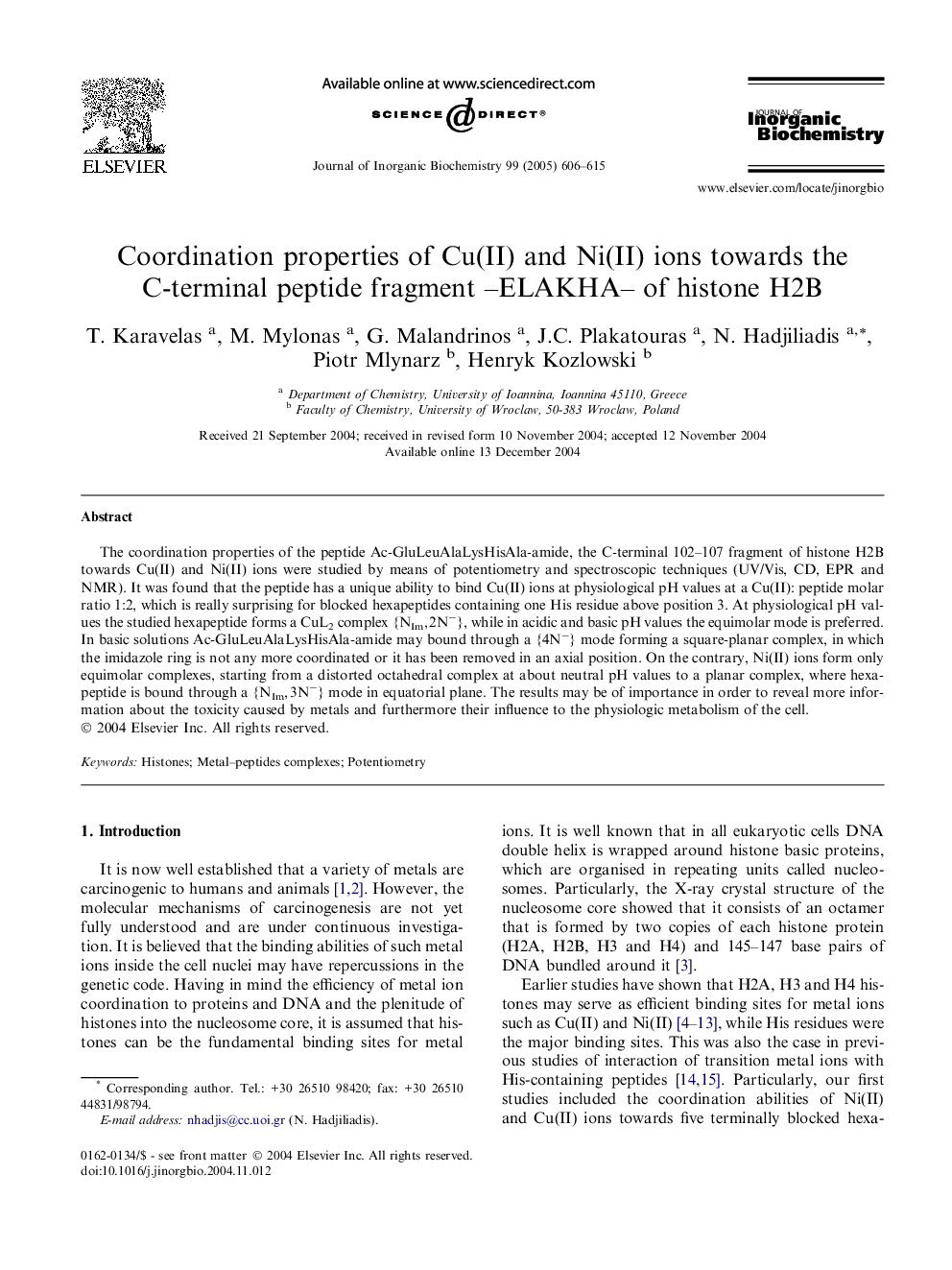| Article ID | Journal | Published Year | Pages | File Type |
|---|---|---|---|---|
| 10574954 | Journal of Inorganic Biochemistry | 2005 | 10 Pages |
Abstract
The coordination properties of the peptide Ac-GluLeuAlaLysHisAla-amide, the C-terminal 102-107 fragment of histone H2B towards Cu(II) and Ni(II) ions were studied by means of potentiometry and spectroscopic techniques (UV/Vis, CD, EPR and NMR). It was found that the peptide has a unique ability to bind Cu(II) ions at physiological pH values at a Cu(II): peptide molar ratio 1:2, which is really surprising for blocked hexapeptides containing one His residue above position 3. At physiological pH values the studied hexapeptide forms a CuL2 complex {NIm, 2Nâ}, while in acidic and basic pH values the equimolar mode is preferred. In basic solutions Ac-GluLeuAlaLysHisAla-amide may bound through a {4Nâ} mode forming a square-planar complex, in which the imidazole ring is not any more coordinated or it has been removed in an axial position. On the contrary, Ni(II) ions form only equimolar complexes, starting from a distorted octahedral complex at about neutral pH values to a planar complex, where hexapeptide is bound through a {NIm, 3Nâ} mode in equatorial plane. The results may be of importance in order to reveal more information about the toxicity caused by metals and furthermore their influence to the physiologic metabolism of the cell.
Keywords
Related Topics
Physical Sciences and Engineering
Chemistry
Inorganic Chemistry
Authors
T. Karavelas, M. Mylonas, G. Malandrinos, J.C. Plakatouras, N. Hadjiliadis, Piotr Mlynarz, Henryk Kozlowski,
